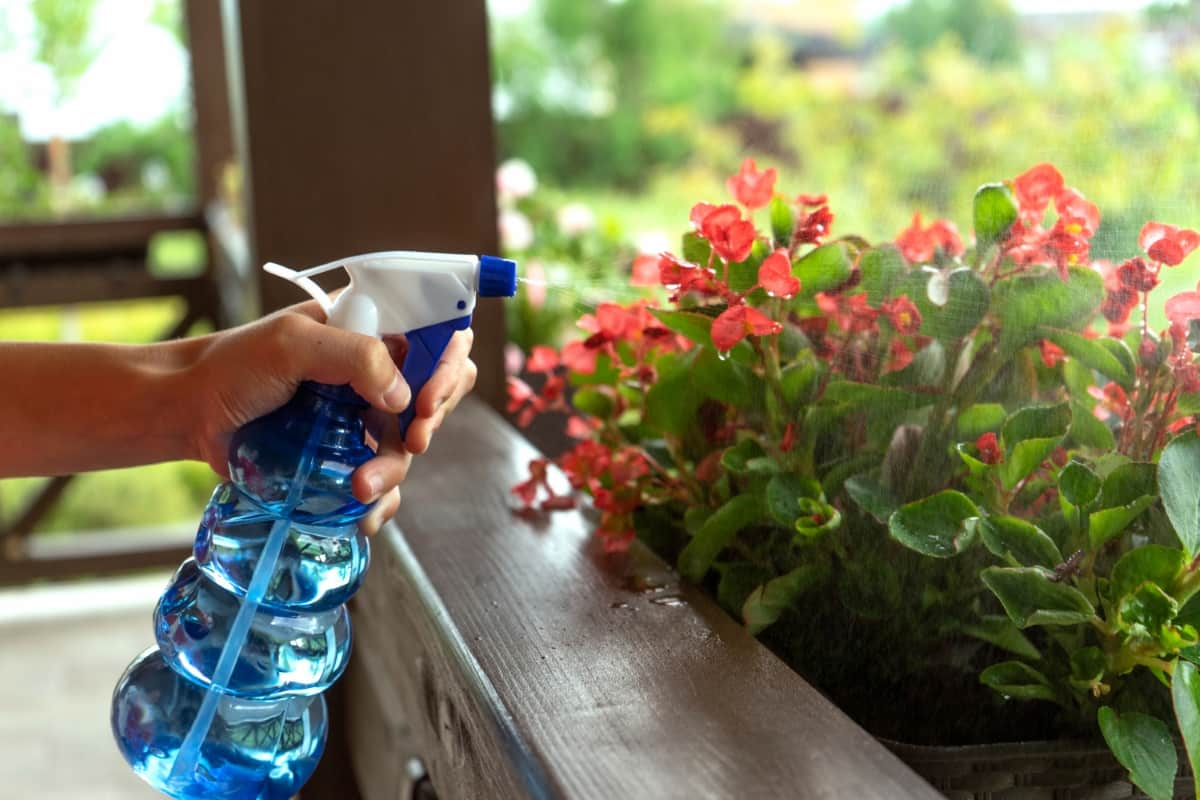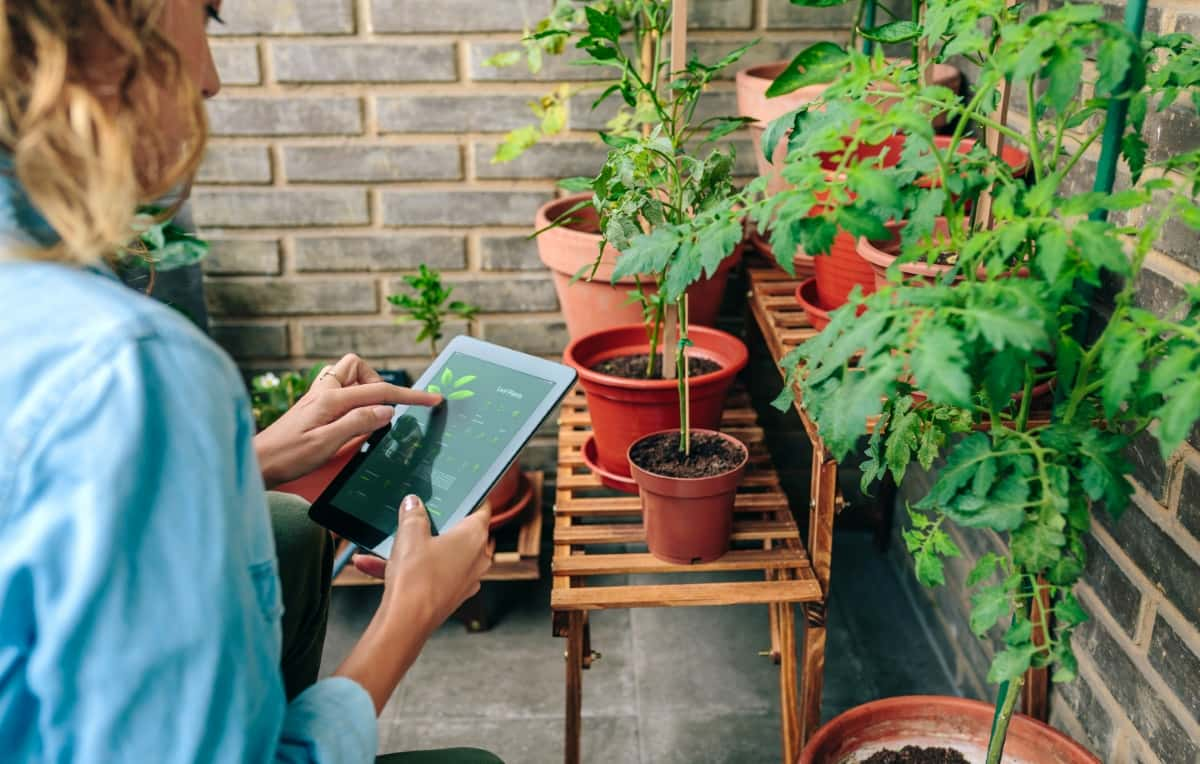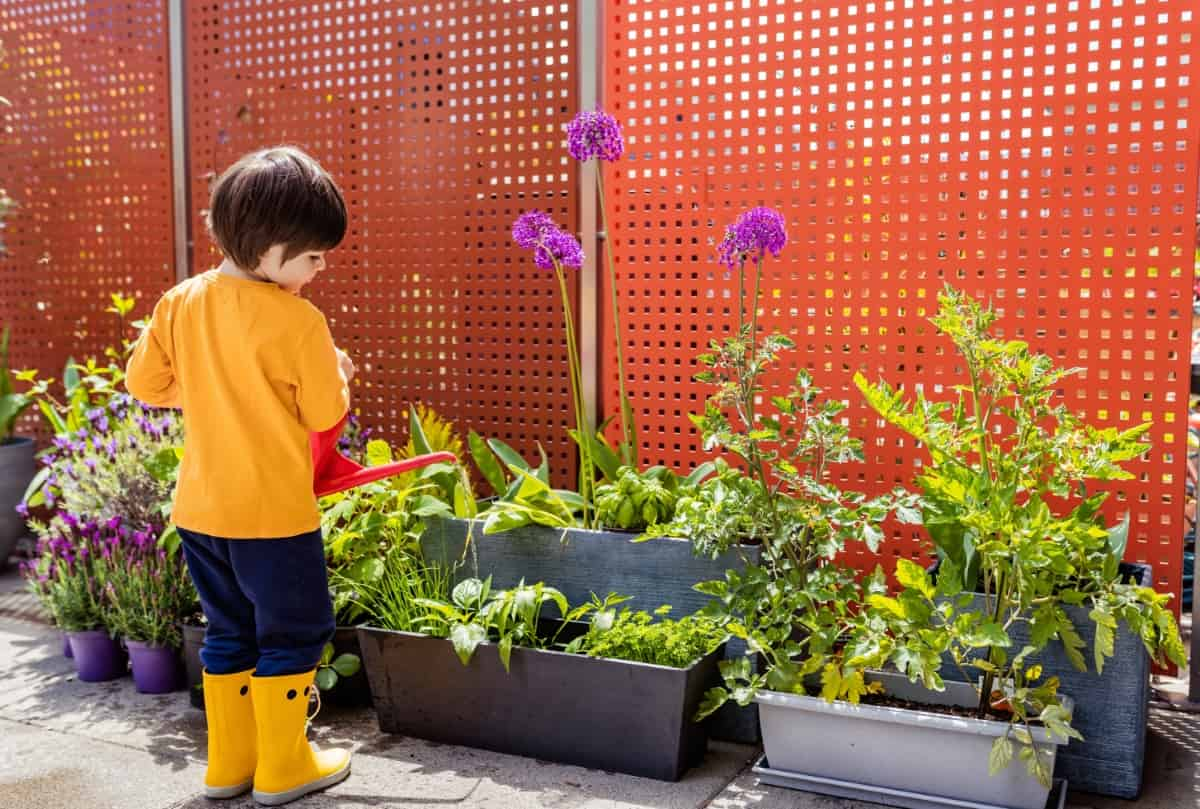Terrace gardens offer a wonderful space for growing various plants. Still, they can also be susceptible to fungal diseases due to factors like limited air circulation, high humidity, and varying temperatures. Managing fungal diseases in terrace gardens is crucial to ensure the health and productivity of your plants. Here’s how to manage fungal diseases, focusing on natural and organic treatments.

Management of Fungal Diseases in Terrace Gardens
Understanding Fungal Diseases in Terrace Gardens
Terrace gardens are susceptible to various fungal diseases that can harm plants and compromise their health. Fungi thrive in warm, humid environments, making terrace gardens with limited airflow particularly vulnerable. Common fungal diseases include powdery mildew, leaf spot, and root rot. These ailments can stunt plant growth, reduce yields, and even lead to plant death. Effective management involves a comprehensive understanding of these diseases, their symptoms, and the factors contributing to their development. Implementing preventive measures is crucial for maintaining a thriving terrace garden while minimizing the need for intervention.
How to Identifying Fungal Pathogens in Terrace Gardens
- Identifying fungal pathogens early is paramount for effective disease management in terrace gardens.
- Vigilance is key, as symptoms may manifest differently depending on the plant and the type of fungus.
- Look for telltale signs such as discolored or distorted leaves, powdery substances, or unusual lesions.
- Regularly inspect both sides of leaves, stems, and soil for any abnormalities.
- Consider environmental factors, such as humidity and poor air circulation, contributing to fungal growth.
- Utilize guides and online resources for accurate identification, and seek assistance from local horticulturists if needed.
- Early detection enables prompt intervention with natural and organic treatments, preventing the escalation of fungal diseases and preserving the health of your terrace garden.
Early Detection and Diagnosis in Managing Fungal Diseases in Terrace Gardens
Early detection and diagnosis are crucial steps for managing fungal disease in terrace gardens. Regular and thorough inspections of plants, focusing on signs like discoloration, lesions, and powdery substances, help identify issues before they escalate. Prompt recognition allows for targeted intervention using natural and organic treatments, preventing the spread of fungal diseases.
In case you missed it: Management of Fungal Diseases in Indoor Gardens: How to Control and Prevent with Natural and Organic Treatment

Monitoring environmental factors such as humidity and air circulation further aids in proactive management. By prioritizing early detection, terrace garden enthusiasts can maintain plant health, minimize damage, and foster a thriving garden environment through sustainable and organic practices.
Carryout Proper Cultural Practices for Disease Prevention in Terrace Gardens
Begin with selecting disease-resistant plant varieties suitable for the local climate. Ensure adequate spacing between plants to promote airflow, reducing humidity and minimizing fungal growth. Practice crop rotation to disrupt disease cycles and regularly remove debris to eliminate potential breeding grounds for pathogens.
Opt for morning irrigation to allow foliage to dry during the day, discouraging fungal development. By adhering to these cultural practices, terrace garden enthusiasts can proactively create an environment that minimizes the risk of fungal diseases and fosters the overall well-being of their plants.
Enhancing Soil Health to Minimize Fungal Disease Incidence in Terrace Gardens
Optimizing soil health is key to minimizing fungal disease incidence in terrace gardens. Begin by incorporating organic matter to improve soil structure and drainage. Employ composting to enhance nutrient levels, fostering robust plant growth and resilience. Practice proper watering techniques, ensuring soil moisture is consistent but not excessive, as overly wet conditions can contribute to fungal proliferation.
Additionally, encourages beneficial microbial activity in the soil through cover cropping. By prioritizing soil health, terrace garden enthusiasts create an environment that fortifies plants against fungal diseases, promoting a thriving and sustainable garden ecosystem.
Best Natural and Organic Treatments for Fungal Disease Control in Terrace Gardens
- Combat fungal diseases in terrace gardens with natural and organic treatments. Neem oil, a potent antifungal, disrupts the life cycle of pathogens.
- Copper-based fungicides, like copper soap, effectively control fungal infections.
- Bacillus subtilis-based products act as biological fungicides, suppressing diseases while being environmentally friendly.
- Garlic and baking soda mixtures create antifungal sprays, providing a natural defense against pathogens. Regular applications of compost tea boost plant immunity.
- These treatments offer effective control and align with organic gardening principles, promoting a healthy, chemical-free environment in your terrace garden.
In case you missed it: Management of Fungal Diseases in Potatoes: How to Control and Prevent with Natural and Organic Treatment

Effective Use of Bio-Fungicides in Terrace Gardens
- Harness the power of bio-fungicides for effective fungal disease control in terrace gardens.
- Utilize products containing beneficial microorganisms like Bacillus subtilis and Trichoderma spp., which act as natural antagonists against fungal pathogens.
- Bio-fungicides strengthen plant defenses and inhibit disease development without harming the environment.
- Apply them preventatively or at the first signs of infection for optimal results. Regular use encourages a balanced microbial community in the soil, promoting a healthier terrace garden ecosystem.
- Embrace these bio-fungicides as an eco-friendly and sustainable approach to safeguarding your plants from fungal diseases.
Managing Humidity and Moisture Levels to Prevent Fungal Infections in Terrace Gardens
Controlling humidity and moisture is pivotal for preventing fungal infections in terrace gardens. Adequate spacing between plants promotes air circulation, reducing humidity levels that foster fungal growth. Water plants in the morning to allow sufficient drying time during the day, discouraging the development of moisture-loving fungi.
Mulching helps retain soil moisture without promoting excess wetness around plants. Regularly monitor and adjust watering practices based on weather conditions. By managing humidity and moisture levels effectively, terrace garden enthusiasts create an environment inhospitable to fungal pathogens, fostering plant health and minimizing the risk of infections.
Proper Sanitation Measures for Controlling Fungal Diseases in Terrace Gardens
Implementing proper sanitation measures is crucial for controlling fungal diseases in terrace gardens. Regularly remove plant debris, fallen leaves, and pruned materials, as they can harbor fungal pathogens. Disinfect gardening tools to avoid the spread of diseases between plants. Practice crop rotation to disrupt disease cycles and avoid planting susceptible species in the same location. Sterilize containers and equipment before reusing them. By maintaining a clean and sanitized garden environment, terrace garden enthusiasts minimize the risk of fungal infections, ensuring their plants’ overall health and vitality.
In case you missed it: Management of Fungal Diseases in Balcony Gardens: How to Control and Prevent with Natural and Organic Treatment

Conclusion
In conclusion, the effective management of fungal diseases in terrace gardens involves a holistic approach to contribute to a resilient and thriving garden. By embracing these organic strategies, enthusiasts can foster a sustainable and chemical-free environment, ensuring the long-term health of their terrace gardens while minimizing the impact of fungal diseases.
- Beneficial Insects in Pest Management
- Natural Solutions for Pest Control in Flower Gardens
- Types of Fungicides Used in Agriculture
- Common Issues in the Fruit Development Stage of Pomegranate Farming
- Fruit Development Issues in Papaya: Easy Solutions and Treatment
- Soil-Borne Diseases and How to Protect Your Plants
- Practices to Prevent Disease Spread in the Garden
- From Wilted to Thriving: How to Treat Root Rot Naturally in Houseplants
- Natural Remedies to Cure Brown Spots on Fig Tree Leaves